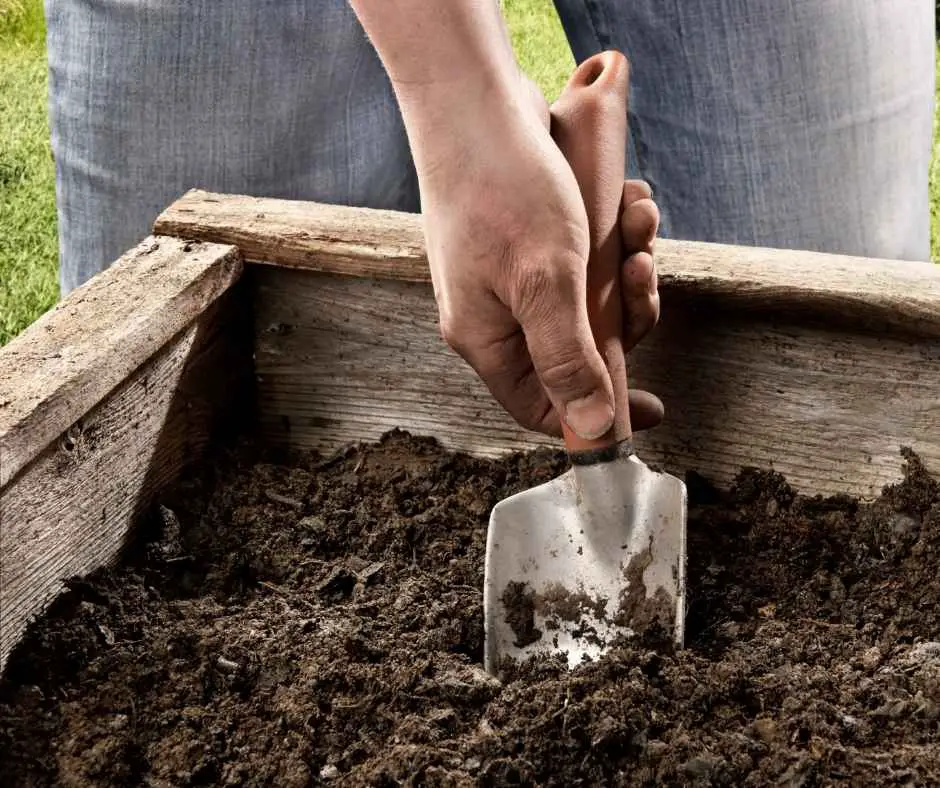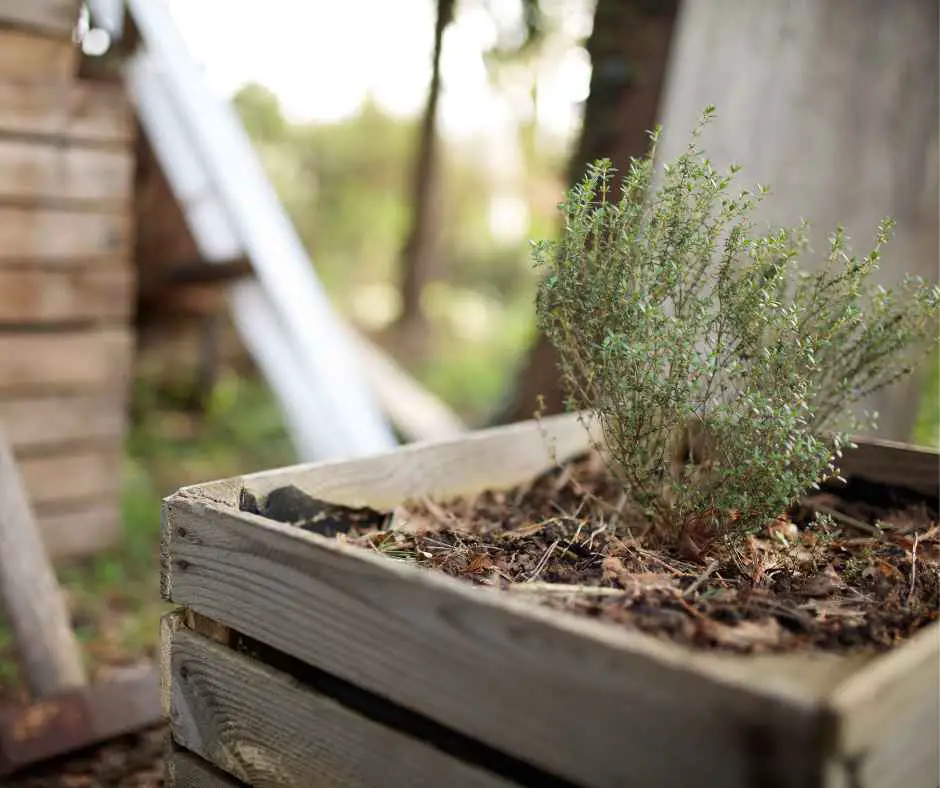When involved in gardening, gardeners always look for the alternatives like container gardens and others to utilize and solve the problems of space. One of these alternatives is raised beds. These beds are even more productive than the ground spaces.

Raised garden beds are the ideas that once in a time always coin in the mind of the gardener. They think about why we should go for it, and how much soil and effort we have to put in. To address such questions, we are going to discuss how much soil is for raised beds.
Raised beds
Raised beds are a type of gardening method in which the soil is elevated above the surrounding ground. They are often used to improve drainage, control soil quality, and make it easier to access plants for maintenance and harvesting.
You will find the raised bed made of a variety of materials, like wood, stone, or metal, and can be built to any size or shape. They can be filled with a mixture of soil and organic matter, such as compost, to create a rich growing environment.
Raised beds are a popular choice for vegetable gardens, herb gardens, and flower gardens. Many times it is used to address the issues of space because, in the limited and specially prepared space, it gives a better average yield than the ground space. That’s why it is liked and preferred.
Why use raised beds?
Besides setting the problem of the space, there are many other benefits that raised garden provides to the particular person who plans to use raised gardening beds for gardening. Some of these benefits are highlighted as follows:
Drainage improved
Raised beds can help prevent waterlogged soil, which can be beneficial for plants that require well-drained soil. it will help in avoiding many diseases rooted in an excess of water in the soil.
Warmer soil
Earlier plantation in the month of February is possible with having a raised bed. Because it warms the soil, making it ready for the earlier plantation and getting yield in the spring season.
Controlling pests
Raised beds can help deter pests such as slugs, snails, and rabbits, which can damage plants at ground level. In this way, the plants grow relatively healthy.
Easier maintenance
Raised beds can be easier to tend to, as they are more accessible and require less bending and stooping. Once established it needs little maintenance until or unless any bigger shift is required.
Improved soil quality
Raised beds can be filled with a custom soil mix, allowing for optimal growing conditions for specific plants. It provides you the chance to make the soil ideal for any required plant.
Increased production
Due to the better soil, drainage, and warmer temperature, the plants grow better in raised beds which can result in increased yield. Also the nutrients, and all good things are concentrated in one place. Which gives good growth to the plants.
Cautions while building the raised bed
Whenever you are going to build a raised bed, it’s important to adhere to some of the important aspects. It is because it will help you in avoiding any potential loss of investment. Some of the prerequisites are as follows:
Selection of the right location
Make sure the bed is in a sunny spot with well-draining soil. The availability of sunlight will make sure the steady growth of the plants.
Using the non-toxic materials
Avoid using pressure-treated wood or any other materials that may contain harmful chemicals. Because when you will water the plant, or when you will use fertilizers and pesticides/ insecticides, the chemical reaction with ingredients used in building raised beds can cause problems.
Avoid compaction
Be careful not to compact the soil when building the bed, as this can make it difficult for roots to penetrate. A harder and more compact soil structure will not allow the growth of plants to be steady.
Consider drainage
Make sure the bed has proper drainage to prevent water from pooling and causing root rot. Drainage in a raised bed is important because in the ground setting the ground might absorb the excess of water but in the raised bed it might not.
Use proper size
Get the width of the raised beds considered. It is because you need to make sure that you can reach the center of the bed from either side. It will make sure easy access.
Watch out for underground facilities
Before digging for the raised bed, do consider if there is any pipeline of gas, water, or drainage pipeline is there. If you are planning to build a raised bed outside your home, then do consider it seriously.
Consider Accessibility
Make sure the bed is at a comfortable height for you to work in and that it is easily accessible. Its settings should be manageable.
Types of Soils to use for raised beds

There are many types of gardening and potting soils available for raised beds. We are going to discuss important ones so that you can decide which one to use essentially.
Topsoil
This is the top layer of soil that is rich in organic matter and is ideal for growing plants. Make sure it’s dark and earthy smells. Don’t use topsoil with a high quantity of sand and clay.
Compost
This is a mixture of decomposed organic matter that can be added to the soil to improve its fertility. You can use it according to the nature of your plant being planted.
Peat moss
This is a type of organic matter that can be added to the soil to improve its water retention. You need to use it if your plant really requires a good amount of water for a period of time.
Vermiculite
This is a type of mineral that can be added to the soil to improve its aeration and drainage. Because air circulation is important for roots and plant growth.
Sand
Sand can be added to the soil to improve drainage and to make it easier to work with. Don’t add much of it. It has its own disadvantages as well.
Manure
To increase the fertility of the soil, manure is used. It is used the same as compost, i.e., according to the requirement of plants.
It is recommended to mix these soil types together to create an ideal soil mix for gardening. It’s also important to note that soil should be tested before planting to check the pH level to ensure it’s appropriate for the plants you want to grow.
How much soil is for a raised bed?
The amount of soil needed for a raised bed depends on the size of the bed and the desired depth of the soil. A general rule of thumb is to use about 2-3 cubic feet of soil per square foot of bed area. You can increase or decrease it according to your need and want.
However, the amount of soil needed can also depend on factors such as the type of plants you plan to grow and the soil conditions in your area. If the plants are deep-rooted you need to use more soil, because it will provide space for root growth.
You can the formula of volume as well. Simply multiply the height, length, and width of the raised garden bed. The final product will give you the volume of soil to be used in the particular raised bed.
It is always recommended to consult with your local nursery or gardening expert to get the most accurate information for your specific needs. You can also use the soil calculator online, keeping the size and shape of a raised bed in mind.
In short, the soil in the raised bed should be used with proper care. It is because you are going to invest your time, money, and effort in it. If the soil selection goes wrong, the plants will not grow steadily. Then it will not be that much useful as the raised garden beds are considered.

